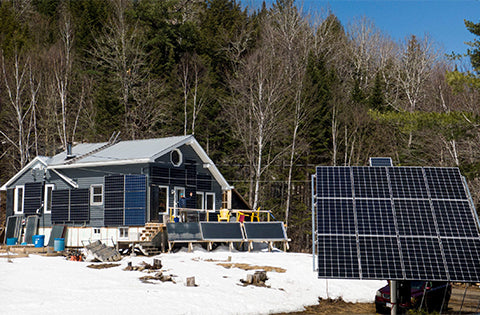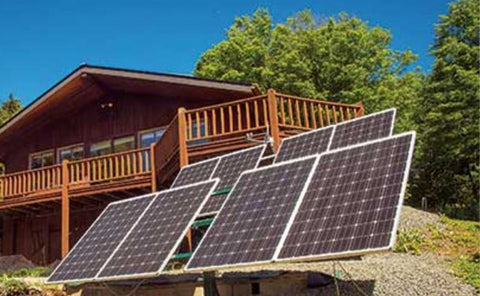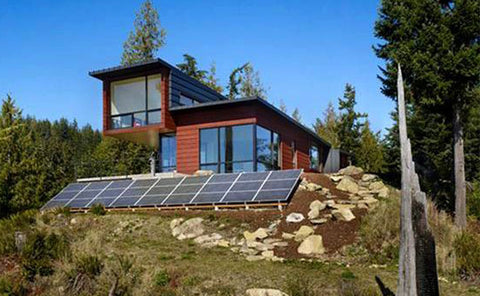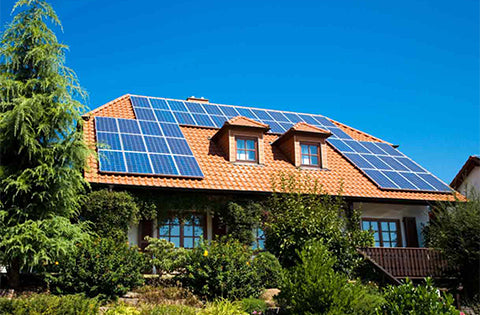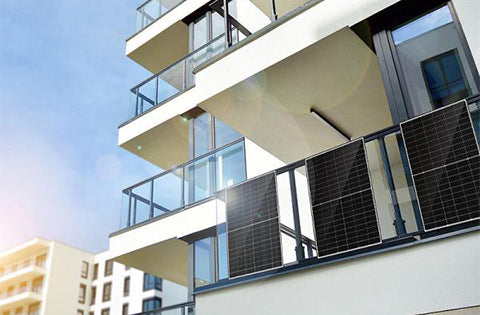For many, a life off the grid is a dream that offers self-reliance, time in nature, and a chance to disconnect. But living without traditional electric, water, and sewer systems can present some challenges too. For those living in colder climates, among the most serious of these is staying warm during the fall and winter months. Off-grid heating isn’t as simple as traditional heating methods. Let’s look at the challenges and the best off-grid heating methods.
Making your living space more heat efficient
Whether you have a traditional home or need an off-grid heating solution, there’s one way to ensure you’ll stay cozy when the temperatures plunge — proper insulation. Every home needs insulation of some kind, and it’s even more crucial for off-grid homes. Good insulation helps your home retain the heat you’ve generated, making the most of your resources. Look for insulation with a high “R” value, which represents the heat-keeping capacity of the material.
The same goes to a lesser extent for your windows. Well-sealed, double pane windows help keep your off-grid home heat-efficient. This all applies equally to staying comfortable in the summer, as good insulation will also help keep your home cool on hot days.
Efficient off-grid heating methods
Anyone considering off-grid living likely knows that you’ll have to operate on limited resources, making your choice of off-grid heating that much more important. Here are some of the most efficient ways to stay warm and who should opt for them.
Electric heat pump
It may seem strange, but electric heat pumps warm your home by pulling heat from the outdoor air, even when temperatures are low. They do this by using a coil containing liquid refrigerant, which absorbs heat from the air outdoors. This heat turns the refrigerant (which boils at a very low temperature) into a vapor. This flows through a second coil that releases the heat from the vapor and into your home. The refrigerant then turns back into a liquid and travels back to the first coil, where the process starts all over again.
Geothermal heat pump
While electric heat pumps work via the air, geothermal heat pumps take advantage of the relatively constant temperature underground. Depending on where you live, the temperature underground usually ranges from around 45 degrees Fahrenheit to approximately 75 degrees. This is typically more comfortable than the air outdoors: cooler in the summer and warmer in the winter. By channeling a home’s air through pipes underground or water, the passive temperature of the earth can do some of your heating for you. In some cases, this alone may be enough to be comfortable. You can also use it with other off-grid heating methods for ultra-efficient temperature control.
Solar thermal panels
While solar power may be the first thing that comes to mind, there are other, more direct, low-tech ways to harness the sun’s heating capacity. Solar thermal panels consist of long, thin tubing mounted in an array exposed to the sun. The extensive surface area of the tubing absorbs a large amount of heat. This heat can transfer to off-grid homes via radiators or other radiant heating methods. As a bonus, hot water is often also available via your faucets, eliminating or reducing the need for a water heater.
Don`t rely on just on heating method
Putting all your eggs in one basket when it comes to off-grid heating can be a disaster waiting to happen. What if you can’t get fuel for your propane heater or wood stove? What if a tech issue knocks your solar energy offline? Backups are critical when living off-grid, and heating can literally be a matter of life and death.
If you rely on an electric heating method, keep some wood or propane around just in case. If you generally heat your home through a stove, a small electric heater capable of running on your power system can be an essential piece of a backup system. Having multiple options means that even when things go wrong, you’ll stay safe and comfortable even when things go wrong.
Keep warm even when you`re off the grid
Just because a house is off the grid doesn’t mean residents shouldn’t enjoy all the comforts of home. With these six methods, just about any homeowner can find a perfect combination for their off-grid heating needs. Though they all have their advantages and drawbacks, understanding each is crucial to making the most of your off-grid life.
We know that building or upgrading an electrical system can be overwhelming, so we’re here to help. And to learn more about off-grid system, please follow SOLARPARTS official website:
Twitter: Solarparts Instagram: Solarparts
Tumblr: Solarparts Pinterest: Solarparts
Facebook: Shenzhen Solarparts Inc
Email address: Philip@isolarparts.com
Homepage: www.isolarparts.com
